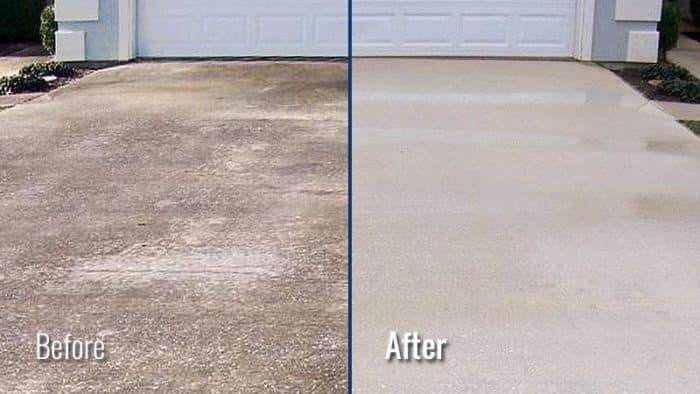Basic Steps for Successful Oil Spot Removal From Automobile Surfaces
Effective oil discolor removal from vehicle surfaces is vital for preserving both looks and worth. Understanding the type of stain and the material impacted can significantly affect the cleaning procedure. By using the right techniques and products, one can attain acceptable outcomes without compromising the integrity of the vehicle's coating.
Examining the Discoloration Type
When dealing with oil discolor elimination from cars, it is necessary to first evaluate the type of discolor existing. Oil spots can differ dramatically based on their origin, age, and the surface area they have penetrated. Usual sources of oil spots include engine oil, transmission fluid, and even cooking oil, each having distinct features that affect the removal procedure.

In addition, take into consideration the place of the discolor. Strongsville Fleet Washing. Discolorations near the engine compartment may suggest a leak, while those under the vehicle could arise from spills or drips. By accurately recognizing the discolor's origin and condition, vehicle proprietors can pick the most reliable elimination techniques, making sure successful outcomes without causing further damage
Event Necessary Materials
Planning for oil discolor removal involves gathering the necessary supplies to make sure a risk-free and reliable cleansing procedure. The right devices and materials can make the difference between a successful result and further damages to your automobile's surface area.
Begin by getting absorbing products such as paper towels or rags, which will help in blotting up excess oil. A container for mixing cleansing solutions is additionally crucial. For the cleansing agents, consider a degreaser specifically created for vehicle surface areas. Alternatively, recipe soap diluted in cozy water can work as a mild alternative for lighter stains.
A soft-bristle brush or sponge will be essential for using the cleaning solution without scraping the surface. In addition, rubber gloves should be put on to secure your hands from severe chemicals, while security goggles can safeguard your eyes from sprinkles.
Lastly, a hose pipe or pressure washing machine is suggested for rinsing the area completely after treatment. By constructing these supplies prior to beginning the cleansing procedure, you set the phase for efficient oil stain removal, guaranteeing that the lorry's outside stays unharmed while recovering its appearance.
Pre-Treatment Actions
With the needed products set up, the emphasis moves to the pre-treatment steps that will certainly assist optimize the oil stain elimination procedure. It is necessary to determine the type of surface impacted by the oil discolor, as various products may need tailored methods. Clean the location around the discolor with water and light read the full info here soap to eliminate any kind of dust or particles, which can impede the performance of the tarnish removal technique
Following, assess the oil tarnish's age and deepness. Fresh spots typically respond much better to therapy than older ones, which might have passed through the surface area more deeply. For older spots, take into consideration soaking the area lightly with an ideal solvent, making sure that it does not harm the underlying material.
Once the surface is prepared, blot the tarnish gently with a tidy, completely dry towel or paper towel to soak up excess oil. These pre-treatment actions lay the foundation for successful tarnish removal, setting the stage for the following stage of the process.
Cleaning Methods to Use
Reliable cleaning approaches are vital for successfully getting rid of oil stains from automobiles. To start, select a degreaser specifically developed for automobile use. Apply the degreaser generously to the tarnished area, guaranteeing it covers the oil area completely. Enable it to sit for at the very least 10-15 minutes to pass through the discolor.
For tougher stains, think about making use of a mix of cooking soda and water to develop a paste. Apply this paste directly onto the stain and scrub with Click This Link the brush, allowing the cooking soda to absorb excess oil.
If the stain lingers, repeating the process may be needed. Complying with these methods will make certain a much more effective oil stain elimination, recovering your lorry's look.
Post-Cleaning Treatment Tips
After efficiently getting rid of oil stains from your car, executing proper post-cleaning treatment is important to keep its look and protect against future discolorations. Beginning by applying a high-quality wax or sealant to the afflicted location. This creates a safety barrier versus environmental impurities, including oil. Regular waxing not just improves the vehicle's shine yet also makes succeeding cleaning less complicated.
Next, think about car parking your vehicle in shaded locations or using a vehicle cover to lessen exposure to sunlight and harsh climate condition. This will aid maintain the integrity of the paint and lower the likelihood of future stains embeding in.
Additionally, keep a close eye on locations where oil leakages might occur, such as the engine compartment and undercarriage. Regular examinations can aid you determine prospective leaks before they come to be troublesome.
Verdict
:strip_icc()/Remove-oil-stains-driveway-ed1d3c89a43b40e2af0bf0ee612ef5b5.jpg)
When dealing with oil stain removal from lorries, it is important to initial assess the type of discolor present. Typical sources of oil spots consist of engine oil, transmission fluid, and even cooking oil, each possessing distinctive qualities that affect the elimination procedure.
Fresh oil discolorations typically appear darker and glossy, while older discolorations may be lighter and a lot more soaked up right into the surface area. Tidy the area around the discolor with water and mild soap to eliminate any kind of dust or debris, which can pop over here prevent the efficiency of the discolor elimination strategy.
After successfully eliminating oil stains from your automobile, implementing correct post-cleaning care is important to preserve its appearance and stop future discolorations.